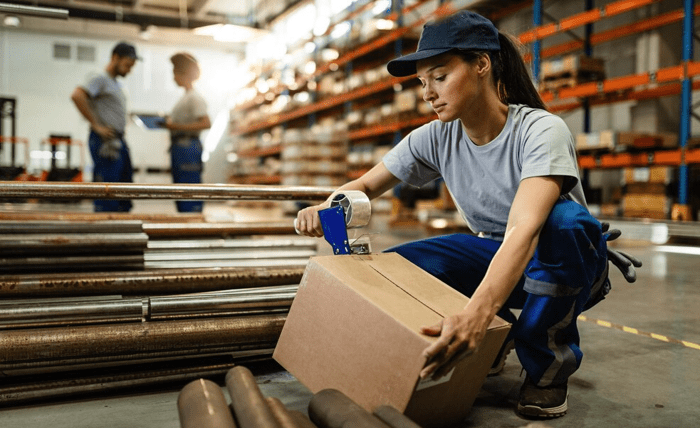
Lifting chains are essential components in the safe and efficient transportation of heavy goods across industries. They form a critical part of lifting systems used in cranes, hoists, and other lifting devices. These chains are built to withstand immense weight and stress, ensuring that materials can be moved without compromising safety or productivity. The role of lifting chains in various operations cannot be overstated, as they enable the handling of items that would otherwise be impossible or dangerous to manage manually.
Understanding the Structure of Lifting Chains
In material handling, lifting chains are typically made of high-quality steel, which provides the necessary strength and durability. The links in a lifting chain are designed to connect seamlessly, offering a robust structure capable of bearing significant loads. Chains are often treated with special coatings to protect against wear, rust, and corrosion, enhancing their longevity. The variety of chains available allows for flexibility in lifting solutions, as different link patterns and materials are suited to different environments, from construction sites to warehouses.
Why Lifting Chains Are Vital in Handling Materials
In the realm of material handling, lifting chains play a crucial role in transporting goods safely. Their versatility allows them to be used in a wide range of environments, from the construction of high-rise buildings to the operations of large warehouses. With lifting chains, objects of varying sizes and weights can be moved with precision and control. They provide the strength necessary to lift materials like steel beams, heavy machinery, and large containers, often exceeding the weight limits of traditional manual lifting methods.
Their resilience to harsh working conditions, such as extreme temperatures and outdoor environments, makes them ideal for heavy-duty tasks. Their flexibility in being paired with other lifting devices, like slings or hooks, means they can adapt to virtually any task within a handling operation.
Types of Lifting Chains and Their Uses
Not all lifting chains are created equal. Depending on the material being moved and the conditions of the job, different types of chains are used. The most common types include:
- Grade 80 Chains: Known for their high strength, these chains are used in overhead lifting operations and are often seen in the construction and manufacturing industries.
- Grade 100 Chains: With even higher strength than Grade 80, these chains are used for the heaviest lifting tasks, often in industries that require the lifting of large industrial loads.
- Stainless Steel Chains: These chains are designed for environments that involve exposure to corrosive elements, such as in marine or chemical processing settings.
Each type of chain is designed to handle specific loads and conditions, ensuring that handling operations are carried out efficiently and without risk of equipment failure.
Ensuring Safety in Lifting Operations
Safety is paramount when using lifting chains. Improper handling or using a chain that isn’t rated for the load can lead to accidents and injuries. It is essential that operators understand the load limits and always inspect lifting chains before use. Chains should be regularly checked for signs of wear, such as elongated links or broken components, and replaced as needed. Additionally, proper training for workers involved in lifting operations ensures that safety procedures are followed, minimizing the risk of accidents.
Understanding the safe use of lifting chains is also important for maintaining the integrity of both the equipment and the materials being handled. By following the manufacturer’s guidelines and conducting regular maintenance, companies can extend the lifespan of their lifting chains and avoid costly repairs or replacements.
Lifting chains are an indispensable part of material handling. Their strength, durability, and adaptability make them vital for safely moving heavy objects across various industries. Whether used in construction, manufacturing, or warehousing, lifting chains ensure that the process is carried out efficiently and securely. Their ability to withstand extreme conditions and heavy loads makes them a reliable choice for even the most demanding lifting applications.




